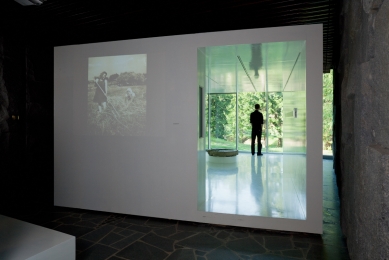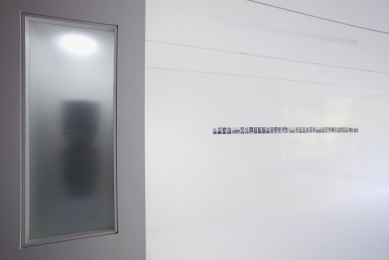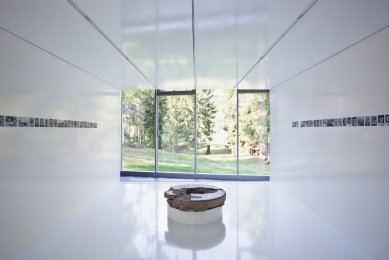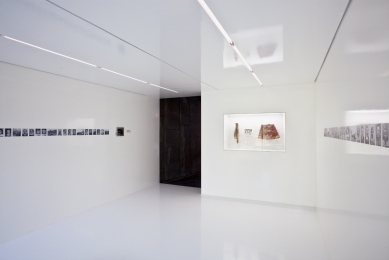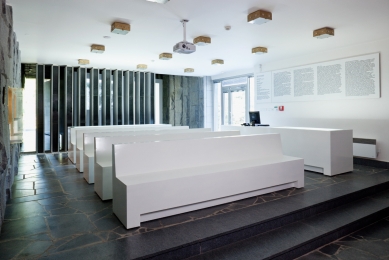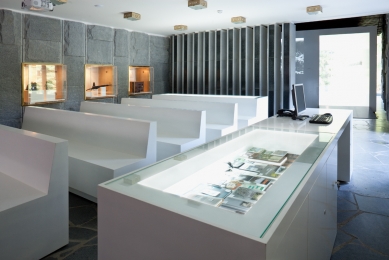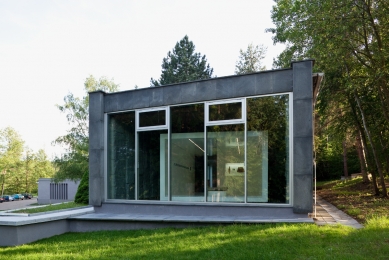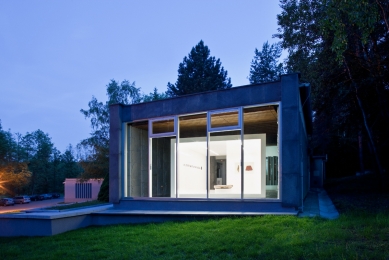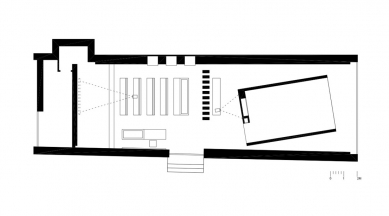
Exhibition at the Ležáky Museum
„Ležáky, a village that did not remain silent“

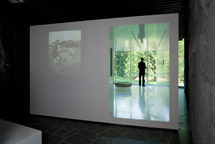 |
In the years 1948 to 1951, a memorial site was built on the site of the settlement according to the design of Ladislav Žák. These modifications are one of the most significant achievements of post-war architecture in the Czech Republic.
In the 1960s, a new building of the Museum was placed in the area according to the design of Stavoprojekt Pardubice. The building, with its heavy and gloomy atmosphere, corresponds to the celebratory character of the architecture of communist Czechoslovakia.
Inside the Museum, we placed a new exhibition that is completely independent of the original building. The exhibition consists of an inserted exhibition box, a reception area, and benches for sitting while watching film projections. All elements of the exhibition are made of white glossy solid wood, and the intensity of the interior lighting is high.
The exhibition box features photographs of the executed inhabitants and several preserved artifacts (a splinter from the executioner's stake, a girl's dress). The photographs are very small, and it is necessary to get close to the faces when viewing. In the wall of the box is a niche where urns with the ashes of the executed inhabitants are respectfully stored.
The exhibition is not didactic; in collaboration with the exhibition curator, emphasis was placed on modesty, tranquility, emotional resonance, and the possibility of calm reflection on the event.
From the exhibition, there is a view through the original window into the old quarry, the place where the original inhabitants were taken to the execution site.
The exhibition is complemented in its own memorial area by a group of massive wooden benches, which are placed in hidden and quiet positions on the edges of the park, in locations that provide a good view over the area of the former settlement.
The English translation is powered by AI tool. Switch to Czech to view the original text source.
1 comment
add comment
Subject
Author
Date
Bravo
Jiří Thiemel
24.03.11 07:13
show all comments


